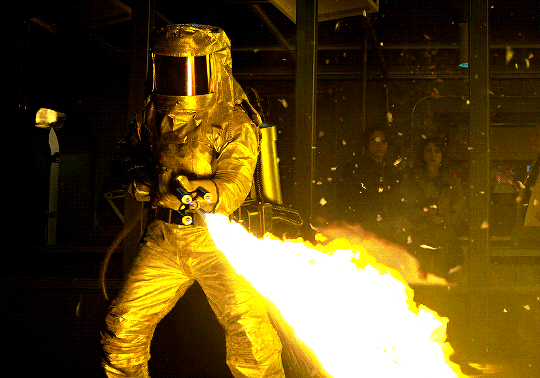Troubleshooting UniFi server errors: A step by step guide
Published onby Iron (edited on )
UniFi server errors can be a major headache, especially if your network depends on consistent uptime for daily operations (like probably everyone).
Le me walk you through how to troubleshoot the most common UniFi server problems. I hope that this somehow can help you to get your system back to optimal performance with minimal downtime.
Lets' dive in!

🚨 Before we get the real troubleshooting part, just a quick note: If you manage client networks on a self-hosted UniFi controller. Please stop. Sooner or later this will cause issues! It's fine for home users, but definitely not recommended for businesses. We've built a secure and reliable UniFi hosting solution that takes the hassle out of managing controllers. You can try it for free.
Table of Contents
- Understanding the error
- Step-by-step troubleshooting
- Step 1: Check server and network connectivity
- Step 2: Review UniFi Controller logs
- Step 3: Confirm UniFi service status
- Step 4: Network equipment checks
- Step 5: Restart the UniFi Controller
- Step 6: Update UniFi Controller software
- Step 7: Check for database corruption
- Step 8: Reset your UniFi devices
- Advanced troubleshooting
- Final thoughts
Understanding the error
Before you do anything, it's important to identify the symptoms you're experiencing. Here are a few common problems you might have:
- Can't access the UniFi Controller: This could be due to network issues, server problems, or software malfunctions.
- Devices not adopting: If new devices cannot be adopted into the network, there could be communication issues between the devices and the controller. For more detailed info on how to do thi properly check our adoption guide.
- Network performance issues: Slow speeds, dropped connections, or intermittent connectivity can indicate configuration or hardware problems.
- Error messages in the UniFi logs: Specific error messages can guide you towards the root cause of the problem.
Step-by-step troubleshooting
Step 1: Check server and network connectivity
Make sure that the server hosting the UniFi Controller is powered on and that all network connections are secure and functioning. Check the server's network configuration settings such as IP address, subnet mask, gateway, and DNS settings.
Step 2: Review UniFi Controller logs
Logs can provide clues to what's going wrong. Access these through the Controller's web interface under Settings > Maintenance > Download Logs. Look for any warnings or errors that correspond to the times you noticed issues.
Step 3: Confirm UniFi service status
Verify that the UniFi Controller software is actively running. Use system-specific commands to check the service status:
- Windows: Open the Run dialog, type
services.msc, and look for the UniFi service. - Linux: Use the command
sudo systemctl status UniFito see if the service is active and running.
Step 4: Network equipment checks
Inspect your physical network setup. This includes checking Ethernet cables, switches, and routers for any signs of damage or failure. Sometimes, replacing a faulty cable or restarting a switch can resolve the issue.
Step 5: Restart the UniFi Controller
A restart can solve a multitude of issues by resetting the service and clearing temporary glitches. This is often the quickest way to resolve unresponsive software.
Step 6: Update UniFi Controller software
Running outdated software can lead to security vulnerabilities and operational bugs. Check for the latest updates in the Controller’s interface and apply them. Always back up your configuration before applying updates.
Step 7: Check for database corruption
If updates and restarts don’t resolve the access issues, your database might be corrupted. Ubiquiti provides tools and guides to repair database issues which can be found in their knowledge base.
Step 8: Reset your UniFi devices
If specific devices fail to adopt or function properly, a factory reset might be necessary. This can be done physically on the device using the reset button or through the Controller interface if accessible.
Advanced troubleshooting
If the above steps do not resolve the issue, consider more advanced troubleshooting methods such as:
- Analyzing network traffic: Use tools like Wireshark to capture and analyze network traffic. This can pinpoint where packets are being dropped or if there are delays in the network.
- Replacing hardware: Sometimes, issues persist due to failing hardware. Replacing old routers, switches, or even the server hosting the Controller might be necessary.
Final thoughts
Troubleshooting UniFi servers requires a methodical approach to identify and resolve issues. By starting with basic checks and progressing to more detailed investigations, you can pinpoint the problem and find a suitable solution.
At UniHosted, we understand the importance of network reliability. That's why we provide managed hosting solutions for UniFi Controller, making that your network is monitored and maintained to prevent issues before they arise. Especially, if you are an MSP or IT-service business looking for flexible and scalable network deployments, this is something for you.
If you would like me to personally walk you through UniHosted, you can schedule a call with me here.
We host UniFi Controllers in the Cloud
Are you ready to take your UniFi Network to the next level? Deploy a UniFi Cloud Controller in minutes and manage your network from anywhere.
Free tier available
Get the best support
Join 1660+ customers
No credit card required